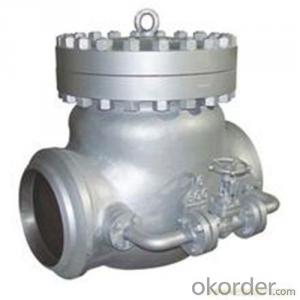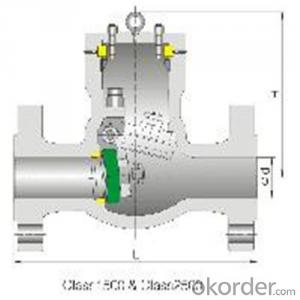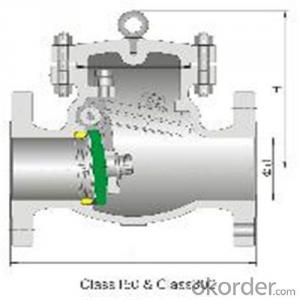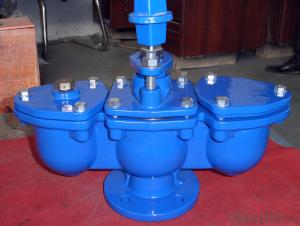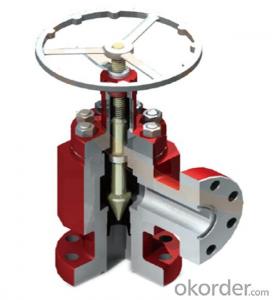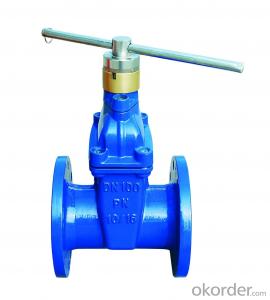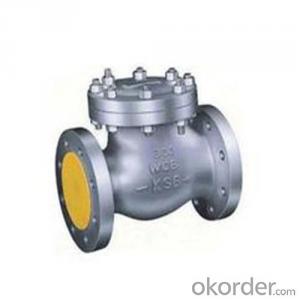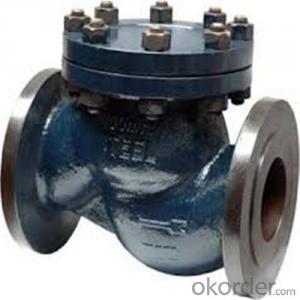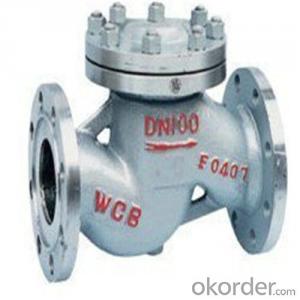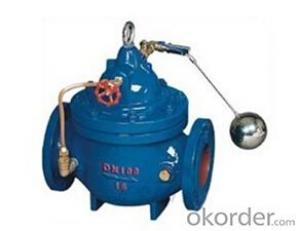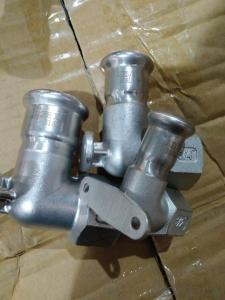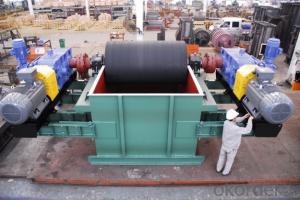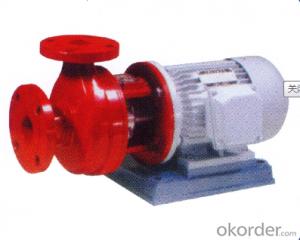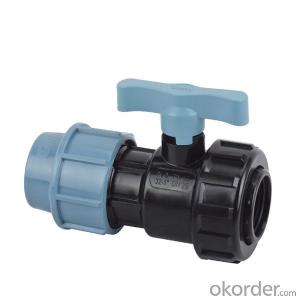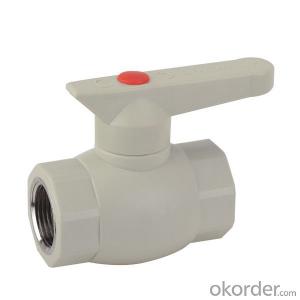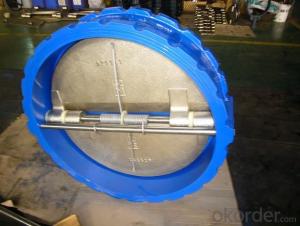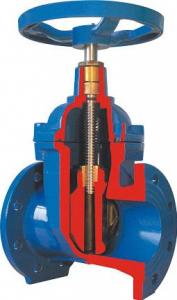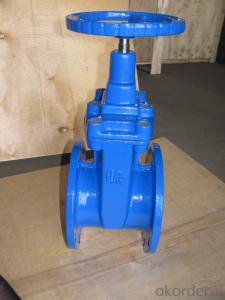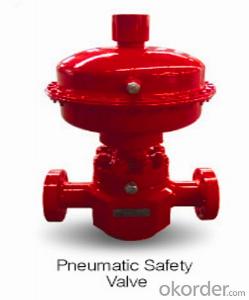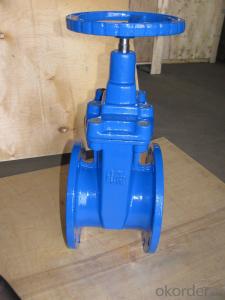API Cast Steel Check Valve Butt Welding in Accordance with ISO17292、API 608、BS 5351
- Loading Port:
- Shanghai
- Payment Terms:
- TT OR LC
- Min Order Qty:
- 10 pc
- Supply Capability:
- 500 pc/month
OKorder Service Pledge
OKorder Financial Service
You Might Also Like
The features of check valve
Bolted Bonnet;Swing and lift disc;Metallic seating surfaces.
Body and Bonnet Connection
The body and bonnet of Class150~Class900 check valves are usually with studs and nuts.And the body and bonnet of Class1500~Class2500 check valves are usually of pressurized seal design.
Body-To-Bonnet Joint
Stainless steel + flesible graphite wounded gasket is used for Class 150 and Class 300 check valve;Stainless steel + flexible graphite wounded gasket is used for Class 600 check valve,and joint gasket is also optional for Class 600 check valve;Ring joint gasket is used for Class900 check valve;Pressurized seal design is used for Class 1500~Class 2500 check valves.
Seat
For carbon steel check valve,the seat is usually forged steel.The sealing surface of the seat is spray welded with hard alloy specified by the customer.Renewable threaded seat is used for NPS<10 check valves ,and welded on seat can be also optional if being requested by the customer.Welded on seat is used for NPS>12 crbon steel gate valves .Forstainless steel check valve,integral seat is usually adopted ,or to weld hard alloy directly integrally.Threaded or welded on seat is also optional for stainless steel check valve if being requested by the customer.
Standard Criteria | ASME/ANSI/API customize |
Pressure Rating | 150 Class 300 Class 600 Class 900 Class 1500 Class 2500 Class customize |
Valve Size | 50 mm 65 mm 80 mm 100 mm 125 mm 150 mm 200 mm 250 mm 300 mm 350 mm 400 mm 450 mm 500 mm 600 mm 650 mm 700 mm 750 mm |
2 inch 2.5 inch 3 inch 4 inch 5 inch 6 inch 8 inch 10 inch 12 inch 14 inch 16 inch 18 inch 20 inch 24 inch 26 inch 28 inch 30 inch customize | |
Actuator | Automatic customize |
Connection | Butt Welding Flange RF Flange RTJ customize |
1-Body Material | A216 WCB A351-CF8 A351-CF8M customize |
2-Seat ring | A105+13Cr A351-CF8M A351-CF8 A105+Tool Steel customize |
3-Disc | 13Cr+A216 WCB A351-CF8 A351-CF8M Tool Steel+A216 WCB customize |
4-Arm | A351-CF8M A216 WCB A351-CF8 customize |
5-Nut | A194-8 A194 2H A194 8M customize |
6-Arm pin | A182-F316 A182-F6a A182-F304 customize |
7-Yoke | A351-CF8M A216 WCB A351-CF8 customize |
8-Bonnet nut | A194 2H A194 8M A194-8 customize |
9-Bonnet bolt | A193-B8 A193-B8M A193-B7 customize |
10-Bolt | A193-B8 A193-B7 A193-B8M customize |
11-Gasket | graphite+304 316+graphite customize |
12-Bonnet | A351-CF8 A216 WCB A351-CF8M customize |
13-Eye bolt | A181 customize |
Design Standard | API 6D BS 1868 customize |
Connection Standard | API 605 ASME B 16.25-2007 ASME B 16.47A ASME B 16.47B ASME B 16.5 MSS SP-44 customize |
Test Standard | API 598 API 6D customize |
Face to Face | ASME B 16.10 customize |
Pressure-temperature ratings | ASME B 16.34-2004 customize |
Wall thickness dimension | API 600 BS 1868 customize |
- Q:Around the relief valve there is water leaking it is not the valve it's self or the threads it's around the out side of it. The valve is on top of the heater
- Sonds like the water heater itself is leaking. As the heater has an insulated jacket around it it is probably the easiest place for the water to escape. call a plumber. It is easyenough to test it to see if it is leaking.
- Q:The tricuspid valve is closed: a. during the rapid filling of the ventriclesb. when the mitral valve is openc. during ejection of blood from the ventriclesHelp plzThank you!
- b, when the ventricle contracts the valve closes to prevent blood from moving back into the atrium.
- Q:Can someone please help me on this anatomy question:Describe the physical similarities and differences in the structure of the AV valves and the semilunar valves.Thanks
- The two atrioventricular (AV) valves ensure blood flows from the atria to the ventricles, and not the other way. These are large, multicusped valves that prevent backflow from the ventricles into the atria during systole. They are anchored to the wall of the ventricle by chordae tendinae, that prevent the valve from inverting. The two semilunar (SL) valves are present in the arteries leaving the heart, and they prevent blood flowing back from the arteries into the ventricles. These are positioned on the pulmonary artery and the aorta. These valves do not have chordae tendinae, but are more similar to valves in veins.
- Q:Hello. I am interested in purchasing a Hydroclean Fill Valve for my toilet. Are these good fill valves? Thanks!
- who cares, a toilet fill valve only costs a few bucks. as long as it opens and closes it's a good valve. if it only lasts for a year then it's a piece of junk and you should try another brand. it's not a major decision
- Q:I know i have to buy a recirculating valve but should i drop 250 on the perrin or will any brand do? how important is a high quality BOV?
- Get a high quality one. you don't want to drop money on something twice because the first one breaks and makes the car run bad. Wait for perrin to have a sale, they always do. I saved over 200 on my intercooler by waiting for them to have a sale.
- Q:I'm a 68 year old male. i've had mitral valve regurgitation all my life . recently an echocardiogram listed it as 3 plus. I'm in otherwise good health and continue to jog 3 miles three times a week at about a 9 minute mile rate. Is surgery advised.
- The valve should be replaced under two conditions: it is causing symptoms that interfere with your lifestyle, or it creates a risk of more serious medical complications. It looks like it isn't affecting your lifestyle. It would be a good idea to ask your doc about the possible complications that might arise from your particular situation and also find out the likelihood that those complication might arise.
- Q:I have a 96 Toyota Camry. I am putting about 4 qts. of oil in it a month. Other than this issue and some other minor things this car is in great shape. It doesn't appear to be smoking from the tailpipe and I never find any puddles of oil under the car after it has been sitting in one place for a while. What can be wrong with my car causing it to eat this much oil. Every now and then I smell a little burning oil but it is not coming from the exhaust. I'm thinking a valve job. Engine has 250,000 miles on it and it runs great other than the oil thing. I drive it 116 miles a day back and forth to work. Any suggestions??? Help!!!
- A valve job is removing the cylinder head(s) from the engine so the valves, guides and seats can be refurbished to restore compression and oil control. A valve job may be necessary by the time an engine has 80,000 or more miles on it, or to fix a burned valve, compression or oil burning problem. If the valves are to be reused, they will be inspected, checked for straightness then refaced. Many shops automatically replace all the exhaust valves to reduce the risk of failure (exhaust valves run much hotter than intakes and are much more likely to fail). On the other hand, if you have an import car with dual overhead cams, four-valves-per-cylinder and a lot of fancy valvetrain hardware, you might be looking at a total bill of $200-$300. Parts typically cost much more for import engines as well as performance engines and diesels. The labor to do the valve work is also much more involved on these overhead cam multi-valve heads. (Of course, they didn't tell you that when you bought the car. All they stressed was the fantastic performance of overhead cams and multiple valves.)
- Q:If my understanding is correct, in a standard combustion engine as you press the gas pedal the speed of everything increases: the cam shafts spin faster (and thus the valves move faster), the pistons move faster...EVERYTHING goes faster. That sounds like an optimal system in theory, so what is the benefit of having the valves be able to be intelligently out of phase (for lack of a better phrase) with the rest of the system?
- Modifying camshaft timing under changing engine demand provides better balance between the following performance concerns: Engine power output Fuel economy Lower tailpipe emissions
- Q:im 16 and im rly scared i have already been checked out by the hospital and they sed that i have a moderately leaky heart valve. They recommended me to see a childrens cardiologist since they dont specialize in children. i have to get another echo and some other tests done i think. im so nervous. whats going to happen to me??
- You will be fine. Get your tests done and see if there are any special instructions to do or keep. My daughter has viral valve prolapse and leads a quite normal life.
- Q:how could you make a valve or a system so that when it is pressurized, if enough pressure is reached in the system the valve will open completely and remain opened until it is close manually?I'm thinking about this in the context of an air powered dart gun, so that the firing mechanism is like a piston, and when a certain air pressure is reached, the valve that connects to the barrel will open and fire the dart
- One thing you can do is get a pressure switch and a solenoid valve so that when whatever you are pressurizing comes to a certain level the switch will close it's normally open contacts and energize the solenoid which will open the valve. However as soon as the pressure level goes below the trigger level the valve will automatically close.
1. Manufacturer Overview |
|
|---|---|
| Location | |
| Year Established | |
| Annual Output Value | |
| Main Markets | |
| Company Certifications | |
2. Manufacturer Certificates |
|
|---|---|
| a) Certification Name | |
| Range | |
| Reference | |
| Validity Period | |
3. Manufacturer Capability |
|
|---|---|
| a)Trade Capacity | |
| Nearest Port | |
| Export Percentage | |
| No.of Employees in Trade Department | |
| Language Spoken: | |
| b)Factory Information | |
| Factory Size: | |
| No. of Production Lines | |
| Contract Manufacturing | |
| Product Price Range | |
Send your message to us
API Cast Steel Check Valve Butt Welding in Accordance with ISO17292、API 608、BS 5351
- Loading Port:
- Shanghai
- Payment Terms:
- TT OR LC
- Min Order Qty:
- 10 pc
- Supply Capability:
- 500 pc/month
OKorder Service Pledge
OKorder Financial Service
Similar products
New products
Hot products
Related keywords
